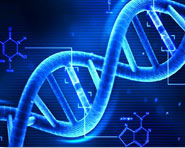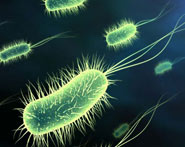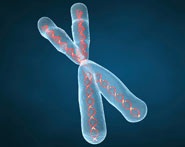


 النبات
النبات
 الحيوان
الحيوان
 الأحياء المجهرية
الأحياء المجهرية
 علم الأمراض
علم الأمراض
 التقانة الإحيائية
التقانة الإحيائية
 التقنية الحيوية المكروبية
التقنية الحيوية المكروبية
 التقنية الحياتية النانوية
التقنية الحياتية النانوية
 علم الأجنة
علم الأجنة
 الأحياء الجزيئي
الأحياء الجزيئي
 علم وظائف الأعضاء
علم وظائف الأعضاء
 الغدد
الغدد
 المضادات الحيوية
المضادات الحيوية|
Read More
Date: 28-10-2020
Date: 31-5-2021
Date: 17-11-2020
|
A hydrogen atom shared by two other atoms generates a hydrogen bond. This sharing is energetically most important when the three atoms are in a straight line and the atom to which the hydrogen is covalently bonded, the hydrogen bond donor, possesses a partial negative charge
and the partner atom, a hydrogen bond acceptor, also possesses a partial negative charge. Then the atoms may approach each other quite closely and the electrostatic attractive forces and the dispersion forces will be appreciable. Since the amide of the peptide bond can be a hydrogen donor, and the carboxyl can be a hydrogen acceptor, proteins have a potential for forming a great many hydrogen bonds. In addition, more than half the side groups of the amino acids usually participate in hydrogen bonding.
A paradox is generated by the existence of hydrogen bonds in proteins. Studies with model compounds show that a hydrogen bond to water should be stronger than a hydrogen bond between amino acids. Why then don’t proteins denature and make all their hydrogen bonds to water? A part of the answer is the chelate effect. That is, two objects appear to bind to one another far more strongly if something else holds them in the correct binding positions than if their own attractive forces must correctly position the objects. In a protein with a structure that holds amino acids in position, any single bond between amino acids within the protein is entropically more favorable than altering the structure of the protein and making the bond to water. Another way of looking at this is that the formation of one hydrogen bond holds other amino acids in position so that they may more easily form hydrogen bonds themselves.
The chelate effect is important in understanding many phenomena of molecular biology. A different example, explained more fully later, concerns proteins. Much of the work required for two macromolecules to bind to one another is correctly positioning and orienting them. Consider the binding of a protein to DNA. If the protein and DNA have been correctly positioned and oriented, then all of their interaction energy can go into holding the two together. In the binding of a dimeric protein to DNA, once the first subunit has bound, the second subunit is automatically positioned and oriented correctly. Therefore the second subunit appears to have the larger effect in binding the protein to DNA than the first one. Equivalently, the dimer appears to bind more tightly than would be predicted by simply doubling the ∆G of the binding reaction of the monomer.



|
|
|
|
مقاومة الأنسولين.. أعراض خفية ومضاعفات خطيرة
|
|
|
|
|
|
|
أمل جديد في علاج ألزهايمر.. اكتشاف إنزيم جديد يساهم في التدهور المعرفي ؟
|
|
|
|
|
|
|
العتبة العباسية المقدسة تنظّم دورةً حول آليّات الذكاء الاصطناعي لملاكاتها
|
|
|